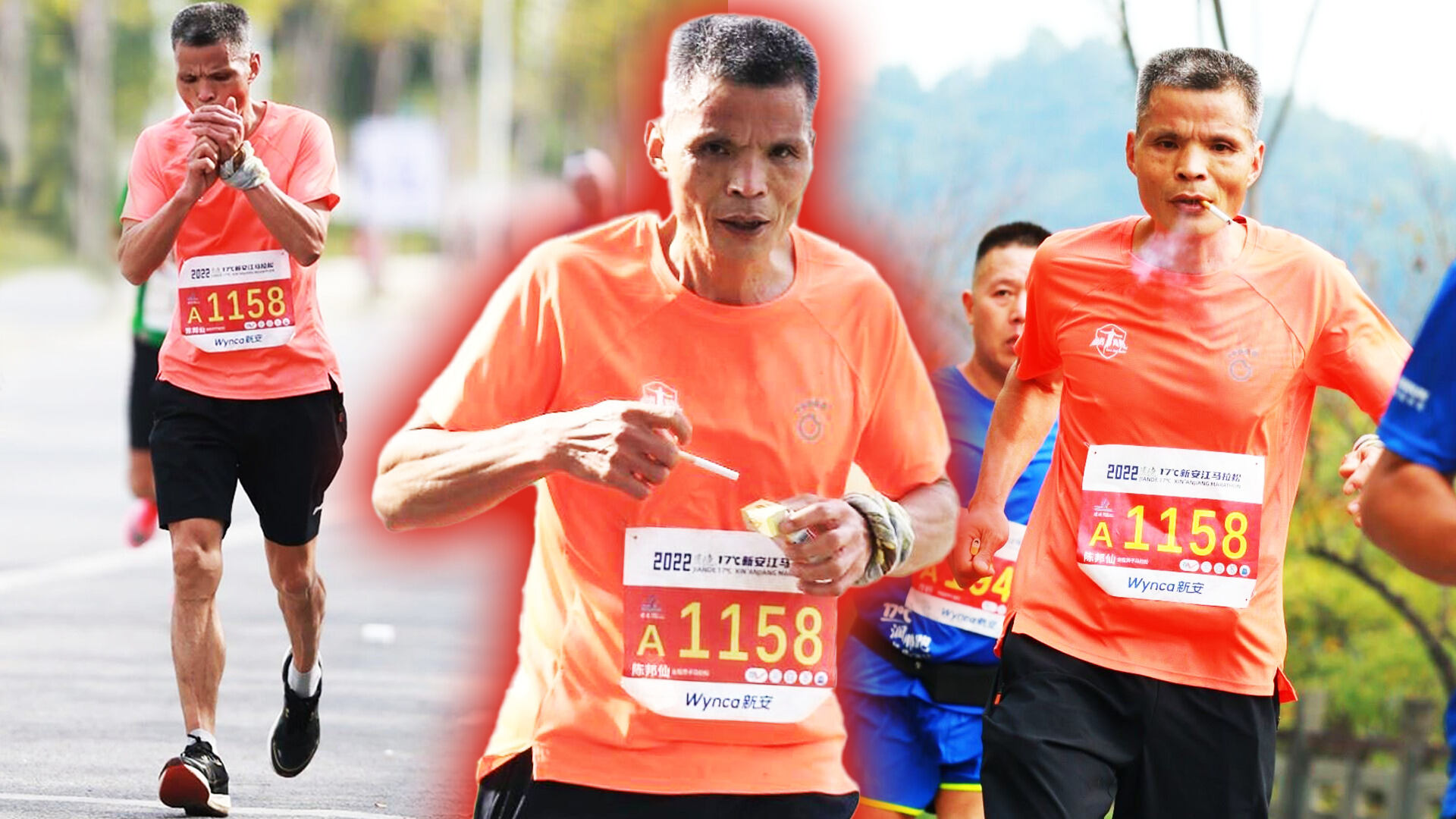Home>Misc>Featured>How Long Does Adaptation Take For Long Slow Distance Running


Featured
How Long Does Adaptation Take For Long Slow Distance Running
Modified: August 21, 2023
Discover how long it takes for adaptation in long slow distance running. Explore the featured benefits of this training method and achieve optimal results.
Introduction
Long slow distance running is a widely practiced form of aerobic exercise that involves running at a moderate pace for an extended period of time. It is often favored by endurance athletes and runners looking to build their cardiovascular fitness and endurance.
This type of running focuses on training the body to efficiently use oxygen, strengthen the cardiovascular system, and improve muscular endurance. While it may not have the same intensity as other forms of running, long slow distance running offers a multitude of benefits that make it an essential part of any training program.
Long slow distance running helps to improve the body’s aerobic capacity, allowing it to efficiently utilize oxygen during endurance activities. This leads to increased endurance, improved cardiovascular health, and enhanced overall fitness. Additionally, it helps to build mental toughness, as the long duration of these runs requires mental fortitude to push through fatigue and maintain a steady pace.
In this article, we will explore the benefits of long slow distance running, the factors that influence adaptation in this type of training, and answer the question of how long it takes to adapt to this form of exercise. We will also discuss training strategies that can optimize adaptation, common mistakes to avoid, and how to effectively monitor progress during the adaptation process.
Whether you are a seasoned runner or a beginner looking to improve your fitness, understanding the process of adaptation in long slow distance running can help you reach your goals and maximize your performance potential.
What is long slow distance running?
Long slow distance (LSD) running is a training method that involves running at a comfortable, moderate pace for an extended period of time. Unlike high-intensity interval training or faster-paced runs, LSD running focuses on building endurance and aerobic capacity rather than speed. It is typically done at a pace that allows for conversation without feeling excessively fatigued.
This type of running is characterized by longer distances, typically ranging from 60-75% of an individual’s maximum heart rate. The goal is to maintain a steady pace throughout the run, avoiding spikes in heart rate and excessive fatigue. LSD running sessions can range from 45 minutes to several hours, depending on the individual’s fitness level and training goals.
LSD running is often associated with marathon and ultramarathon training, as it helps athletes prepare their bodies for the long distances involved in these events. However, it is also applicable to any runner looking to build endurance and improve cardiovascular fitness. It can be incorporated into weekly training routines as a way to increase mileage and improve overall aerobic capacity.
One of the key benefits of LSD running is that it helps build stamina and trains the body to burn fat for fuel, rather than relying solely on glycogen stores. This is particularly useful for long-distance events where the body needs to conserve glycogen for sustained energy. Additionally, LSD running promotes muscular endurance and strengthens the cardiovascular system, improving overall cardiovascular health.
It’s important to note that LSD running should be done at a comfortable pace, allowing for proper recovery between runs. Pushing too hard during LSD runs can lead to overtraining, increased risk of injury, and decreased performance. Therefore, it’s essential to listen to your body, respect your limits, and gradually increase the distance and duration of your LSD runs over time.
While LSD running may not be the fastest way to improve your speed, it is an effective training method for building endurance and improving overall cardiovascular fitness. By incorporating long slow distance runs into your training regimen, you can enhance your aerobic capacity, increase your running stamina, and better prepare yourself for longer distance races or simply enjoy the mental and physical benefits of running.
The benefits of long slow distance running
Long slow distance (LSD) running offers a range of benefits that make it a valuable component of any training program. While it may not provide the immediate gratification of speed or intense workouts, the long-term advantages of LSD running are significant. Let’s explore some of the key benefits:
- Improved cardiovascular fitness: LSD running helps to strengthen the cardiovascular system by increasing the efficiency of the heart and lungs. Regular participation in LSD running leads to improved blood circulation, lower resting heart rate, and increased oxygen delivery to the muscles.
- Enhanced endurance: By gradually increasing the duration and distance of LSD runs, runners can develop greater endurance. This is particularly beneficial for individuals participating in endurance events like marathons, where the ability to sustain a steady pace over a long distance is crucial.
- Mental fortitude: Long slow distance running requires mental resilience and determination. The extended duration of these runs pushes runners to go beyond their comfort zones and develop mental toughness. This mental strength can extend beyond the running arena into other areas of life.
- Increased fat burning: LSD running is an excellent way to train the body to utilize fat as a fuel source. As the body adapts to longer duration runs, it becomes more efficient at burning fat for energy, which can aid in weight management and improve overall body composition.
- Reduced risk of injury: LSD running puts less stress on the body compared to high-intensity workouts. It allows for proper recovery between runs and is generally less prone to acute injuries. It can also help strengthen muscles, tendons, and ligaments, reducing the risk of overuse injuries.
- Stress relief and mental well-being: Long slow distance running releases endorphins, the body’s feel-good hormones, which can help reduce stress and improve mood. It provides a time for contemplation, relaxation, and an escape from the demands of daily life.
It’s worth noting that while LSD running offers numerous benefits, it should be balanced with other forms of training to avoid plateaus and adapt to the varying demands of different types of running. Incorporating speed workouts and strength training alongside LSD runs can help maximize overall fitness and performance.
Incorporating long slow distance running into your training routine can have a transformative impact on your overall fitness, endurance, and mental strength. Embrace the journey and reap the long-term rewards that come from consistent LSD running.
Factors influencing adaptation in long slow distance running
Adaptation in long slow distance (LSD) running is a complex process that is influenced by several factors. Understanding these factors can help runners optimize their training and achieve the desired outcomes. Let’s explore some of the key factors that influence adaptation in LSD running:
- Volume and intensity: The volume (distance) and intensity (pace) of LSD running play a significant role in adaptation. Gradually increasing the duration and distance of runs allows the body to adapt to the demands of sustained aerobic activity. It’s important to strike a balance between challenging the body and avoiding overtraining or injury.
- Consistency: Consistency in training is crucial for adaptation. Regularly engaging in LSD running sessions helps the body adapt to the physiological demands of prolonged endurance exercise. Consistency allows for incremental progress and reduces the risk of setbacks.
- Individual differences: Each individual’s response to LSD running will vary based on factors such as genetics, fitness level, previous training background, and overall health. Some people may adapt more quickly, while others may require more time. It’s important to listen to your body and adjust your training accordingly.
- Nutrition and hydration: Proper nutrition and hydration are essential for optimal adaptation. Adequate intake of carbohydrates, proteins, and fats provides the necessary fuel for endurance exercise and supports recovery. Staying hydrated helps maintain performance and aids in the elimination of waste products generated during exercise.
- Recovery and rest: Adequate recovery and rest are essential for adaptation. LSD running places stress on the body, and allowing sufficient time for recovery allows for tissue repair and adaptation to occur. Incorporating rest days, active recovery exercises, and quality sleep are key components of the adaptation process.
- Training history: A runner’s training history plays a role in adaptation. Individuals with a solid aerobic base built through consistent LSD running may adapt more quickly than those with less training experience or who have focused on other forms of exercise. However, it’s never too late to start and see improvements with proper training.
It’s important to recognize that adaptation is a gradual process that occurs over time. Patience and consistency are key. As you engage in LSD running, pay attention to your body’s cues, make adjustments when necessary, and enjoy the progression as you adapt and improve your endurance.
How long does adaptation take?
The duration of adaptation in long slow distance (LSD) running can vary widely depending on several factors. While there is no specific timeline that applies to everyone, it generally takes several weeks to several months for the body to adapt to the demands of LSD running.
Individual factors such as fitness level, training history, and genetics play a significant role in the rate of adaptation. Those who have a solid aerobic base or have previous experience with LSD running may adapt more quickly compared to beginners or individuals with limited training background. The body’s ability to adjust to the demands of LSD running is a gradual process that requires patience, consistency, and proper training.
It’s important to note that adaptation does not occur in a linear fashion. The body goes through various stages of adaptation, each with its own timeline and physiological changes. Initially, improvements may be subtle, such as increased endurance and decreased heart rate during runs. Over time, as the body becomes more efficient at utilizing oxygen and conserving energy, more significant adaptations occur.
On average, it is commonly believed that it takes around 4-8 weeks for noticeable improvements to be seen in LSD running performance. However, it’s important to remember that individual responses can vary, and some individuals may require more time to adapt fully.
Consistency and gradual progression are key during the adaptation period. Gradually increasing the duration, distance, or intensity of LSD runs allows the body to adapt while minimizing the risk of overtraining or injury. Monitoring your progress through metrics such as heart rate, pace, and perceived effort can help track improvements and adjust training accordingly.
It’s essential to remember that adaptation is an ongoing process. Even after achieving initial improvements, there is still room for further growth and progression. Continual training and challenging the body with appropriate stimuli are necessary to continue seeing improvements in performance and endurance.
Finally, it’s important to listen to your body and make adjustments as needed. If you are experiencing excessive fatigue, pain, or a lack of progress, it may be a sign that you need to reevaluate your training plan and seek guidance from a qualified coach or healthcare professional.
Overall, the duration of adaptation in LSD running varies depending on individual factors, but with consistent training and proper progression, improvements can be seen within a few weeks to a few months. Embrace the process, trust in your body’s ability to adapt, and enjoy the journey towards becoming a stronger and more resilient runner.
Training strategies for optimal adaptation
When it comes to long slow distance (LSD) running, implementing effective training strategies can help optimize the process of adaptation and enhance your performance. Here are some key strategies to consider:
- Gradual progression: Gradually increase the duration and distance of your LSD runs to allow your body to adapt gradually. Avoid sudden jumps in volume or intensity, as this can increase the risk of overuse injuries.
- Mix up the terrain: Incorporate varied terrains into your LSD runs to challenge different muscles and prevent overuse injuries. Consider running on trails, hills, or even incorporating some treadmill runs to add variety and adapt to different surfaces.
- Include cross-training: Incorporate other forms of exercise such as swimming, cycling, or strength training into your routine. Cross-training helps improve overall fitness, strengthens different muscles, and gives your body a break from the repetitive nature of running.
- Periodization: Implement a periodization plan that includes cycles of higher and lower volume and intensity. This helps prevent overtraining and allows for proper recovery and adaptation.
- Strength training: Include strength training exercises that focus on the muscles used in running, such as the legs, core, and glutes. Stronger muscles help improve running efficiency and reduce the risk of injury.
- Proper nutrition and hydration: Fuel your body with the right nutrients and stay hydrated to support optimal performance and recovery. A balanced diet rich in carbohydrates, proteins, and healthy fats provides the necessary energy for endurance runs.
- Pay attention to recovery: Incorporate rest days and active recovery exercises to allow your body to recover and adapt. Quality sleep, foam rolling, stretching, and gentle mobility exercises can help reduce muscle soreness and promote recovery.
- Listen to your body: Pay attention to any signs of excessive fatigue, pain, or discomfort. It’s important to listen to your body and make adjustments to your training plan as needed. Overtraining can hinder adaptation and increase the risk of injury.
- Monitor progress: Track your progress using metrics such as heart rate, pace, and perceived effort. Keeping a training journal or using a fitness tracking app can help you see improvements over time and adjust your training plan accordingly.
- Seek guidance: If you’re new to LSD running or want to optimize your training for a specific goal, consider working with a qualified running coach or trainer. They can provide personalized guidance, help create a tailored training plan, and assist in monitoring your progress.
By incorporating these strategies into your LSD running routine, you can optimize your training, facilitate adaptation, and enhance your overall performance and endurance.
Common mistakes to avoid during adaptation
During the adaptation process in long slow distance (LSD) running, it’s important to be aware of common mistakes that can hinder progress and increase the risk of injury. By avoiding these mistakes, you can optimize your training and make the most out of your LSD running sessions. Here are some common mistakes to watch out for:
- Too much, too soon: One of the biggest mistakes is increasing volume or intensity too quickly. This can lead to overuse injuries, burnout, and hinder adaptation. Gradual progression is key.
- Ignoring rest and recovery: Not allowing for proper rest and recovery is a common mistake. Overtraining can result in decreased performance, fatigue, and increased susceptibility to injury. Include rest days and active recovery exercises in your training plan.
- Neglecting strength training: Many runners overlook the importance of strength training. Weak muscles can lead to poor running form and increase the risk of injuries. Incorporate strength exercises that target the main running muscles into your routine.
- Poor nutrition and hydration: Failing to fuel your body with the right nutrients and staying properly hydrated can inhibit adaptation. Maintain a balanced diet and ensure adequate hydration to support your training and recovery.
- Skipping cross-training: Relying solely on running without incorporating cross-training activities can lead to imbalances and overuse injuries. Include activities like swimming, cycling, or yoga to diversify your training and strengthen different muscle groups.
- Ignoring warning signals: Ignoring pain or discomfort during training can have serious consequences. Listen to your body and address any warning signals promptly. Pushing through pain can lead to more severe injuries and longer recovery periods.
- Not monitoring progress: Failing to track your progress can make it difficult to gauge improvements and make necessary adjustments. Keep a training journal or use a fitness tracking app to log your runs, monitor metrics, and evaluate progress.
- Comparing yourself to others: Every runner progresses at their own pace. Comparing yourself to others can be demotivating and discouraging. Focus on your own journey and celebrate your personal achievements.
- Neglecting mental well-being: Running is not just physical; it’s mental too. Neglecting mental well-being can impact performance and enjoyment. Take time to practice self-care, manage stress, and find strategies to stay motivated and mentally strong.
- Not seeking guidance: If you’re new to LSD running or facing challenges, seek guidance from a qualified running coach or healthcare professional. Their expertise can help you avoid mistakes and ensure that you’re on the right track.
Avoiding these mistakes will contribute to a more successful adaptation process in LSD running. Be mindful of your training, listen to your body, and always prioritize your well-being to make the most out of your LSD running experience.
Monitoring and tracking progress during adaptation
Monitoring and tracking your progress during the adaptation phase of long slow distance (LSD) running is crucial for evaluating your performance and making necessary adjustments to your training plan. It allows you to measure your progress, identify areas of improvement, and stay motivated. Here are some effective ways to monitor and track your progress:
- Record your runs: Keep a training journal or use a fitness tracking app to log your runs. Include details such as distance, duration, pace, perceived effort, and any other relevant notes about the run. This will allow you to track your progress over time.
- Monitor heart rate and perceived effort: Pay attention to your heart rate during LSD runs. As your body adapts, you may notice that your heart rate decreases at a given pace, indicating improved cardiovascular efficiency. Additionally, pay attention to your perceived effort, as it will provide insight into your progress and help determine appropriate training intensities.
- Track key metrics: Monitoring metrics such as pace, average speed, and distance covered during LSD runs can help you identify trends and improvements. These metrics can provide a sense of accomplishment and help you set specific goals for future runs.
- Set benchmarks: Establish benchmarks or milestones to assess your progress. This could be achieving a particular distance or shaving off time from a previous LSD run. Setting achievable benchmarks will help you stay motivated and provide a sense of accomplishment.
- Track recovery: Recovery plays a vital role in adaptation. Pay attention to how quickly you recover between long runs and assess how your body feels during subsequent workouts. Feeling less fatigued and experiencing faster recovery times are signs of improved adaptation.
- Periodic fitness assessment: Consider scheduling periodic fitness assessments to measure your progress more objectively. These assessments may include tests like a timed run, VO2 max tests, or body composition assessments. Consulting with a fitness professional can help you develop a comprehensive assessment plan.
- Reflect on overall well-being: Adaptation isn’t just physical; it also involves mental and emotional changes. Reflect on how you feel during your LSD runs and after completing them. Notice improvements in mood, stress levels, and overall well-being as indications of positive adaptation.
- Seek feedback from others: Engage with fellow runners, join online communities, or participate in running groups to receive feedback and support. Sharing experiences and learning from others can provide additional insights and motivation during the adaptation process.
Remember that adaptation takes time, and progress can be gradual. Be patient and celebrate even the small wins along the way. Monitoring and tracking your progress will not only help you assess your improvement but will also provide valuable data to guide your future training decisions. Embrace the process, stay consistent, and enjoy the journey of continuous improvement in your LSD running.
Conclusion
Long slow distance (LSD) running is a valuable training method for building endurance, improving cardiovascular fitness, and enhancing overall performance. Through gradual progression and consistency, LSD running enables the body to adapt to the demands of sustained aerobic exercise, leading to significant benefits in both physical and mental aspects of running.
In this article, we explored the concept of LSD running and its benefits. We discussed the factors that influence adaptation and the timeline it takes for the body to adapt to this form of exercise. We also provided strategies for optimizing adaptation, including gradual progression, cross-training, strength training, and proper recovery.
Additionally, we highlighted common mistakes to avoid, such as overtraining, neglecting recovery, and disregarding strength training. By being mindful of these mistakes, runners can minimize the risk of injuries and setbacks during the adaptation process.
Monitoring and tracking progress are key components of successful adaptation. Recording your runs, tracking key metrics, setting benchmarks, and assessing overall well-being help provide the necessary information to adjust training and stay motivated throughout the adaptation phase.
Remember, adaptation is a journey unique to each individual, and it takes time and patience. Embrace the process, listen to your body, and seek guidance when needed. With dedication, consistency, and a positive mindset, LSD running can lead to improved endurance, cardiovascular fitness, and overall well-being.
So lace up your running shoes, hit the road or trail, and embark on your LSD running journey. Enjoy the benefits, relish the progress, and revel in the transformative power that this form of exercise can bring to your running and your life.









